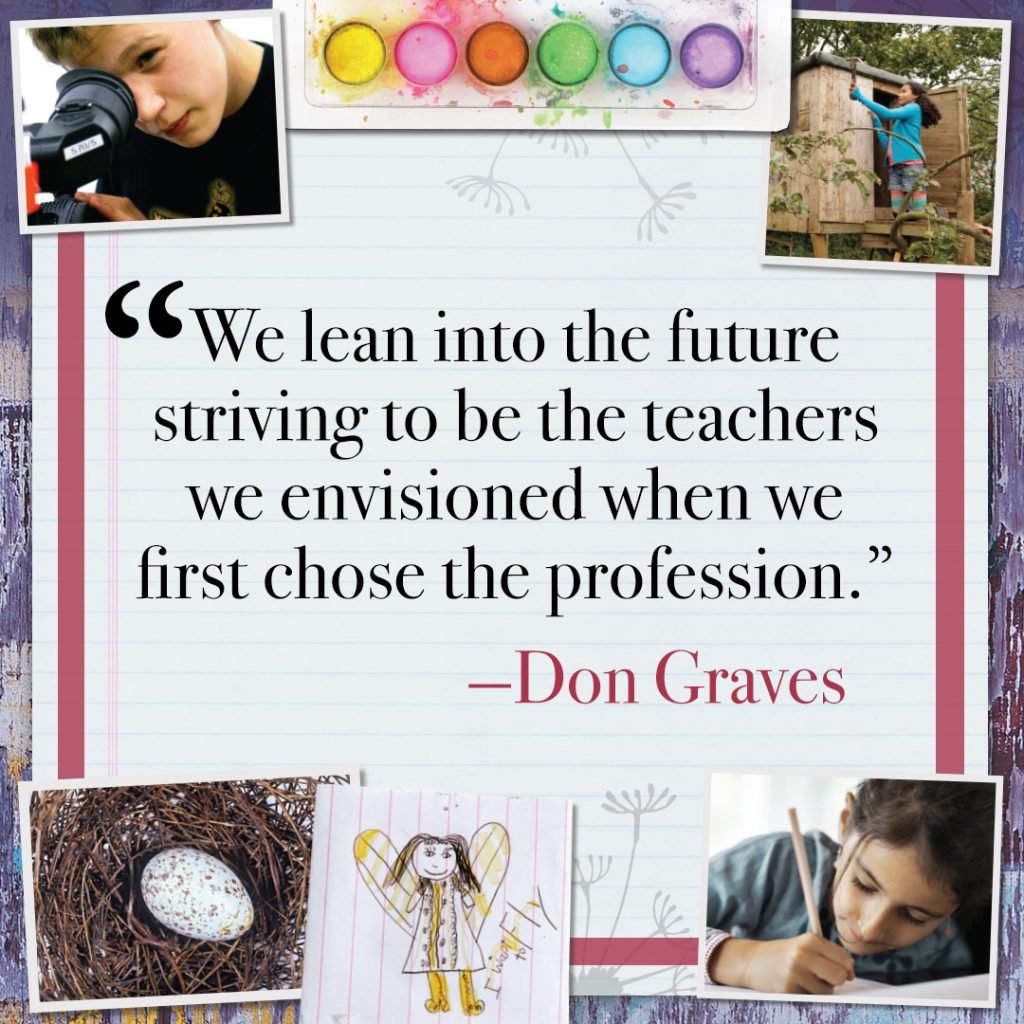
The following is from The Energy to Teach, by Donald Graves
I began to teach without the threat of assessments and with colleagues who did support me, especially the principal. Yet, I remember the bewildering array of personalities in my thirty-nine students, the range of different parents, and the volume of curriculum to be grasped. I had trouble eating and sleeping and was short-tempered when I cam home from school in the afternoon.
First-year teachers will need to consider access points for making contact with other teachers, especially beginners. The most obvious are before and after school. During school there may be special breaks, lunch, or even teachers’ meetings, where you’ll have a chance to sit next to someone you wish to get to know. I am not speaking about extensive time commitments. Initially, the greatest need for new teachers is to know they are not alone, and that someone recognizes their place in the building. Simply saying, “How’s it going?” goes a long way.
The next step to building collegiality is simply listening. When you ask, “How’s it going, Jen?” take a posture that suggests no hurry and make eye contact. This kind of query most likely will come after school when you are both not feeling pressure. If you can, make a visit to your colleague’s classroom instead of waiting for them to arrive in yours. Teachers continually mention initiating contact as an energy giver.
At all levels of our rushed society, there is a kind of doorknob communication. I acquired the term “doorknob medicine” from one doctor commenting about her own profession. Not long after I heard the remark I went to another doctor for my annual physical. We went through the exam and the doctor deftly explained the status of my health. He rose, went to the door, rested his hand on the doorknob, and asked, “now, do you have any questions?” I had my list well prepared but only managed to get through the first three of ten. I now send my questions ahead, stating, “These are some areas I would like to discuss with you.” Clerks, bankers, lawyers, educators from all walks of life feel the pressure of human contacts. Humans take time. More importantly, humans take emotionally laden time.
Not long ago I was in an airport when my flight was canceled. A long line quickly formed to make reservations for a new flight. I was worried that I might have to take a much later flight, as were the others in line. I noticed that the attendant at the desk focused on each person with a familiar pattern, “And how are you today?” If there was some emotional steam to be released, he didn’t duck it. Next, he commented, “Now, let’s see how we can handle this.” In spite of the long, anxious line in front of him he focused on each person, calmly went about the business of solving the problem, and just as relaxed, greeted the next person in line. I was struck by his ability to focus, but even more by his calming effect on me and the other passengers. In any human sphere or workplace, the unhurried greeting with total postured focus on the person gives life and energy to both.
This is an invitation to deliberately practice the unhurried, relaxed focus of greeting colleagues with special emphasis on new faculty. Be prepared for focused listening after the greeting.



